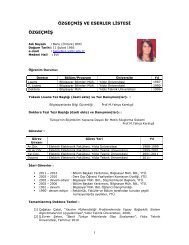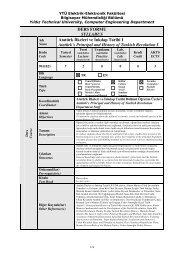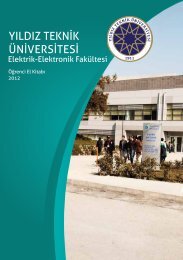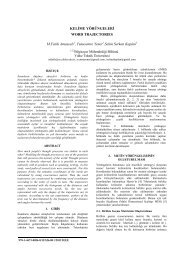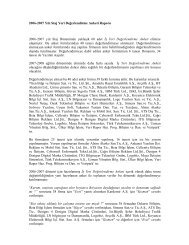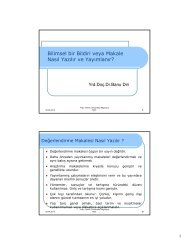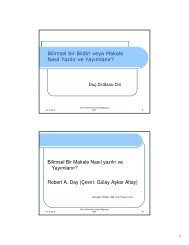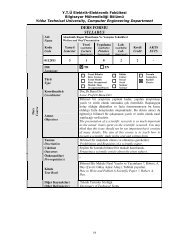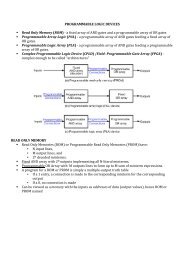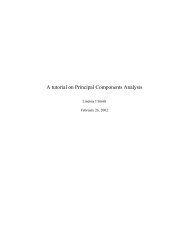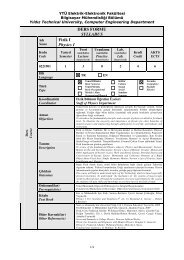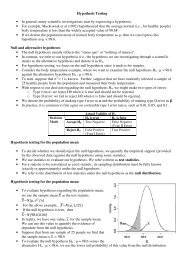Create successful ePaper yourself
Turn your PDF publications into a flip-book with our unique Google optimized e-Paper software.
yourid1 JOB 1,JOE,MSGCLASS=X<br />
//STEP1 EXEC PGM=IEBGENER<br />
//SYSIN DD DUMMY<br />
//SYSPRINT DD SYSOUT=*<br />
//SYSUT2 DD DISP=OLD,DSN= yourid.JCL(TEST6)<br />
//SYSUT1 DD *<br />
This is some text to put in the member<br />
More text<br />
/*<br />
Save the member with this JCL. It will be used later.<br />
Copying a PDS member<br />
There are many ways to copy a library member. An earlier exercise used the ISPF 3.3 panel function to copy<br />
all the members of a library. The same function can be used to copy one or more members.<br />
While editing a library member, we can copy another member of the library into it:<br />
• Edit a library member.<br />
• Mark a line in this member with a (after) or b (before) to indicate where the other member should be<br />
copied.<br />
• Enter COPY xxx on the command line, where xxx is the name of another member in the current data<br />
set.<br />
We can copy a member from another data set (or a sequential data set) as follows:<br />
• Edit a member or sequential data set.<br />
• Mark a line with A (after) or B (before) to indicate where to insert the new material.<br />
• Enter COPY on the command line to display the Edit/View-Copy panel.<br />
• Enter the full sequential data set name (with single quotes, if necessary) or a full library name<br />
(including member name) in the Data Set Name field.<br />
Learning about system volumes<br />
Use the ISPF functions to explore several system volumes. The following are of interest:<br />
• Examine the naming of VSAM data sets. Note the words DATA and INDEX as the last qualifier.<br />
• Find the spool area. This may involve a guess based on the data set name. How large is it<br />
• Find the basic system libraries, such as SYS1.PROCLIB and so forth. Look at the member names.<br />
• Consider the ISPF statistics field that is displayed in a member list. How does it differ for source<br />
libraries and execution libraries<br />
Using a utility program in a job<br />
z/<strong>OS</strong> has a utility program named IEBGENER to copy data. It uses four DD statements:<br />
• SYSIN for control statements. We can code DD DUMMY for this statement, because we do not have<br />
any control statements for this job.<br />
• SYSPRINT for messages from the program. Use SYSOUT=X for this lab.<br />
• SYSUT1 for the input data.<br />
• SYSUT2 for the output data.<br />
The basic function of the program is to copy the data set pointed to by SYSUT1 to the data set pointed to by<br />
SYSUT2. Both must be sequential data sets or members of a library.<br />
The program automatically obtains the data control block (DCB) attributes from the input data set and<br />
applies them to the output data set. Write the JCL for a job to list the yourid.JCL(TEST1) member to<br />
SYSOUT=X.<br />
Examining the TSO logon JCL<br />
The password panel of the TSO logon process contains the name of the JCL procedure used to create a TSO<br />
session. There are several procedures with different characteristics.<br />
Look at the ISPFPROC procedure. The instructor can help find the correct library for ISPFPROC.<br />
• What is the name of the basic TSO program that is executed<br />
• Why are there so many DD statements Notice the concatenation.<br />
11



